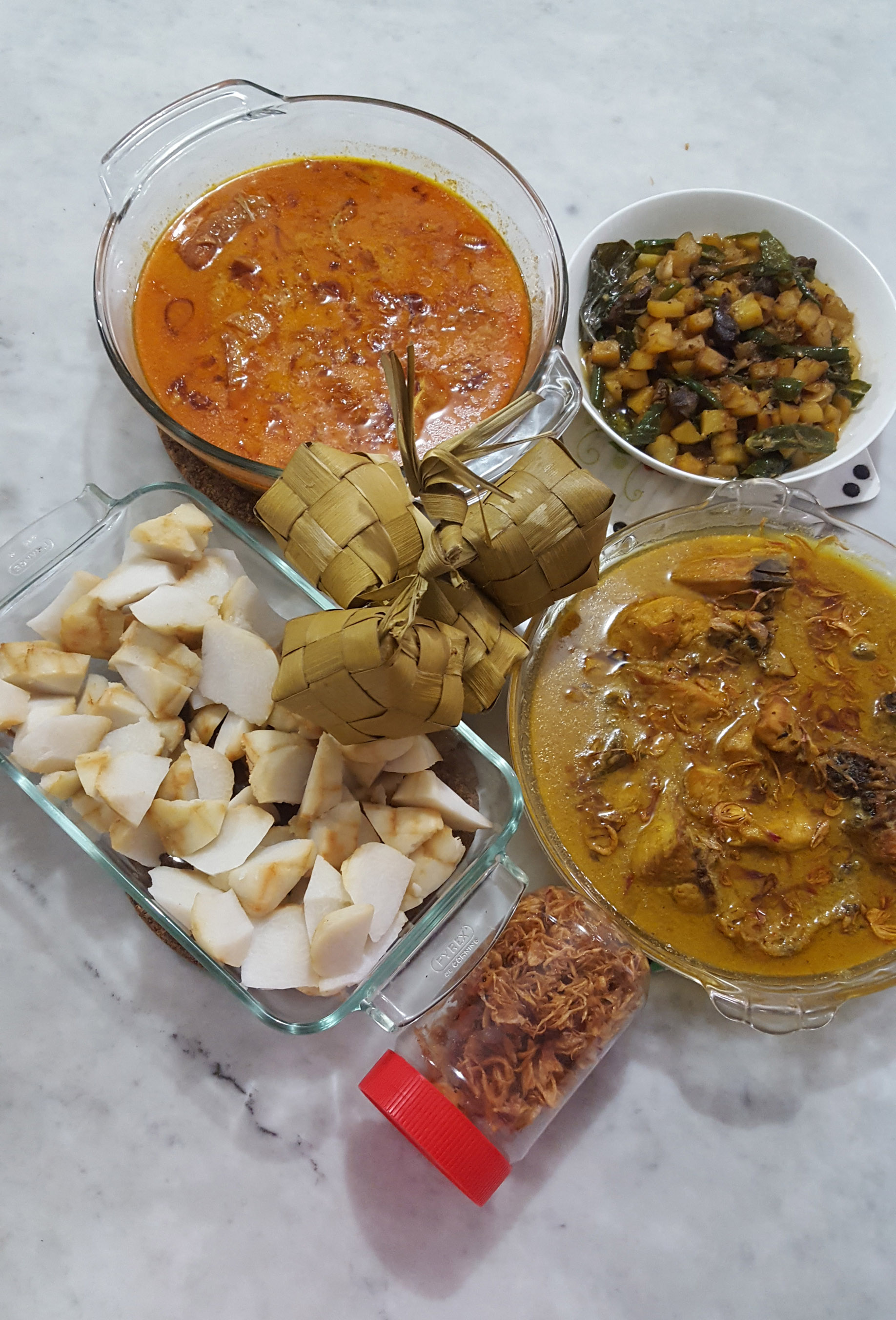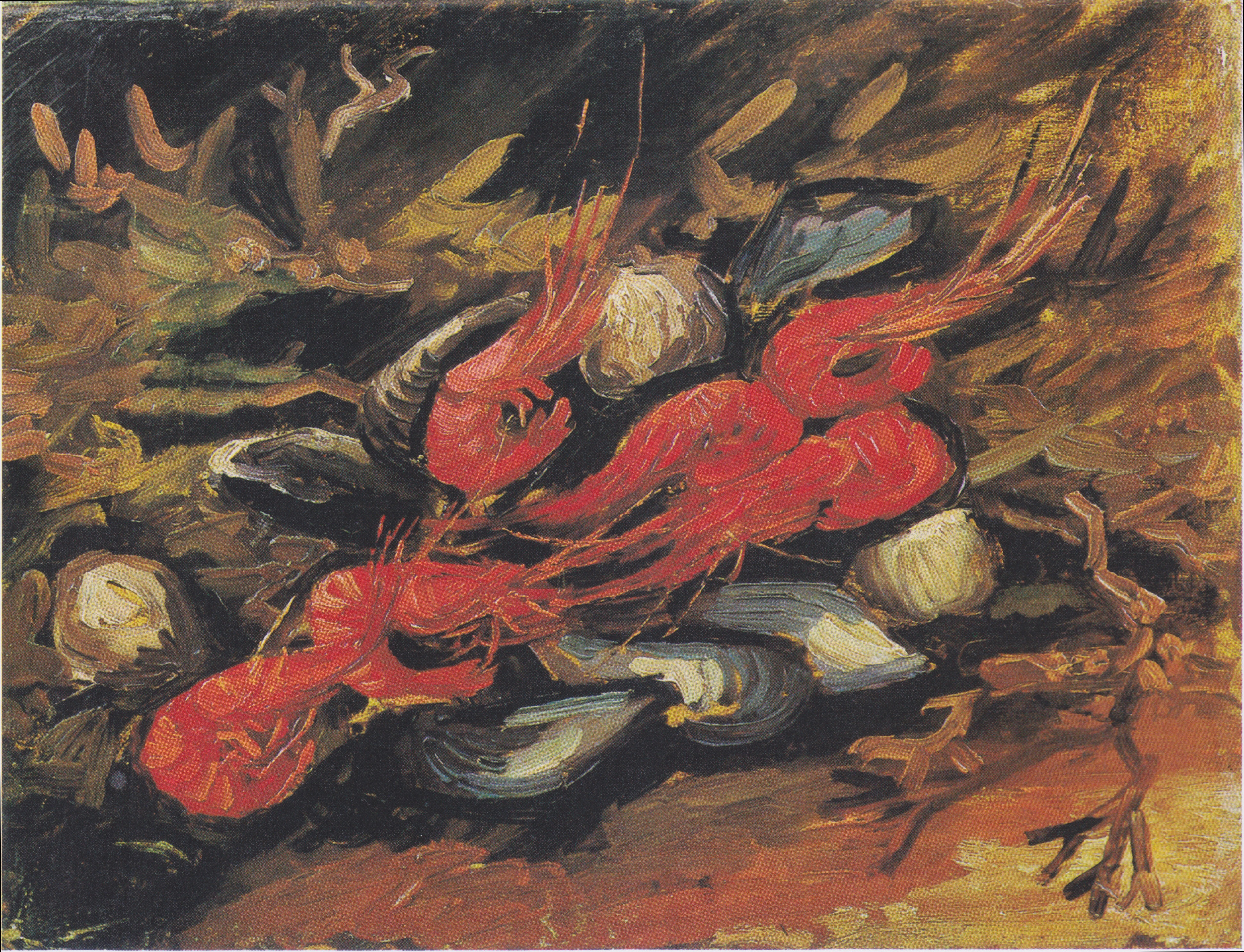|
Rempeyek
Rempeyek or peyek is a deep-fried savoury Indonesian- Javanese cracker made from flour (usually rice flour) with other ingredients, bound or coated by crispy flour batter. The most common type of rempeyek is ''peyek kacang'' ("peanut peyek"); However, other ingredients can be used instead, such as ''teri'' (dried anchovies), ''rebon'' (small shrimp), or ''ebi'' ( dried shrimp). Today, rempeyek is commonly found in Indonesia and Malaysia, as well as in countries with considerable Indonesian migrant populations, such as The Netherlands and Suriname. Coconut milk, salt, and spices such as ground candlenuts and coriander are often mixed within the flour batter. Some recipes also add a chopped citrus leaf. The spiced batter, mixed or sprinkled with the granule ingredients, is deep-fried in hot coconut oil. The flour batter acts as a binding agent for the granules (peanuts, anchovy, shrimp, etc.). It hardens upon frying and turns into a golden brown and crispy cracker. In Indones ... [...More Info...] [...Related Items...] OR: [Wikipedia] [Google] [Baidu] |
Indonesian Cuisine
Indonesian cuisine is a collection of various regional culinary traditions by various ethnic groups that formed in the archipelagic nation of Indonesia. There are a wide variety of recipes and cuisines in part because Indonesia is composed of approximately 6,000 populated List of islands of Indonesia, islands of the total 17,508 in the world's largest archipelago,"Indonesian Cuisine." . Accessed July 2011. Tradition and characteristics Indonesia has around 5,350 traditional recipes, with 30 of them ...[...More Info...] [...Related Items...] OR: [Wikipedia] [Google] [Baidu] |
Pecel
Pecel (, Javanese:ꦥꦼꦕꦼꦭ꧀) is a traditional Javanese salad with peanut sauce, usually eaten with steamed rice, ''lontong'' or '' ketupat''. The simplicity of its preparation and cheap price has contributed to its popularity throughout Java. It has become a food that represents practicality, simplicity, and travel since the dish is often found along train journeys across Java. Pecel was introduced to Malaysia, where it is known as pecal, by Javanese immigrants. Pecel is also very popular in Suriname, where it was introduced by the Javanese Surinamese. History Pecel is an ancient food that has existed since the 9th century AD, the era of the Ancient Mataram Kingdom under the reign of king Rakai Watukura Dyah Balitung (898–930 AD) which was recorded in the Kakawin Ramayana. Pecel is also written in the Taji Ponorogo Inscription (901 AD), the Siman Inscription from Kediri (865 S/943 AD), the Babad Tanah Jawi (1647 AD) and Serat Centhini (1742 S/1814 AD). ''P ... [...More Info...] [...Related Items...] OR: [Wikipedia] [Google] [Baidu] |
Javanese Cuisine
Javanese cuisine () is the cuisine of Javanese people, a major Native Indonesian, ethnic group in Indonesia in the provinces of Central Java, Yogyakarta, and East Java. Definition Javanese cuisine refers exclusively to the cuisine of Javanese people, which is often brought to other regions and countries by Javanese diaspora or foreign descents who have lived in Java. There are several native ethnic groups who live on the island of Java (Sundanese people, Sundanese, Madurese people, Madurese, Betawi people, Betawi, etc.) as well as other peoples of foreign descents. In Indonesian language, Javanese refers to people of Javanese ethnic background. Javanese cuisine is thought to be sweet, since this is the taste traditionally preferred in Yogyakarta. However, Javanese regions do not only include Yogyakarta. On the northern and northeastern of Central Java, for instance, the taste tends to be salty and spicy. In East Java, the level of spiciness increases. Today, as Javanese p ... [...More Info...] [...Related Items...] OR: [Wikipedia] [Google] [Baidu] |
Indonesia
Indonesia, officially the Republic of Indonesia, is a country in Southeast Asia and Oceania, between the Indian Ocean, Indian and Pacific Ocean, Pacific oceans. Comprising over List of islands of Indonesia, 17,000 islands, including Sumatra, Java, Sulawesi, and parts of Borneo and New Guinea, Indonesia is the world's largest archipelagic state and the List of countries and dependencies by area, 14th-largest country by area, at . With over 280 million people, Indonesia is the world's List of countries and dependencies by population, fourth-most-populous country and the most populous Islam by country, Muslim-majority country. Java, the world's List of islands by population, most populous island, is home to more than half of the country's population. Indonesia operates as a Presidential system, presidential republic with an elected People's Consultative Assembly, legislature and consists of Provinces of Indonesia, 38 provinces, nine of which have Autonomous administrative divisi ... [...More Info...] [...Related Items...] OR: [Wikipedia] [Google] [Baidu] |
Candlenut
''Aleurites moluccanus'', commonly known as candlenut, is a tree in the spurge family Euphorbiaceae. It grows to about tall and produces drupe fruit. First described by Carl Linnaeus in 1753, the species' origin is unclear due to its spread by humans, but it can be found in many tropical rainforests and gallery forests. Various parts of the plant have regional or cultural uses. Description The candlenut grows to a height of up to , with wide spreading or pendulous branches. The leaves are pale green, simple, and ovate or heart-shaped on mature shoots, but may be three-, five-, or seven-lobed on saplings. They are up to long and wide and young leaves are densely clothed in rusty or cream stellate hairs. Petioles measure up to long and stipules about . Flowers are small—male flowers measure around 5 mm in diameter, female flowers about 9 mm. The fruit is a drupe about in diameter with one or two lobes; each lobe has a single soft, white, oily, kernel contained within a ... [...More Info...] [...Related Items...] OR: [Wikipedia] [Google] [Baidu] |
Shrimp And Prawn As Food
Shrimps and prawns are types of shellfish seafood that are consumed worldwide. Prawns and shrimps are crustacea and are very similar in appearance with the terms often used interchangeably in commercial farming and wild fisheries. A 1990s distinction made in Indian aquaculture literature, which increasingly uses the term "prawn" only for the freshwater forms of palaemonids and "shrimp" for the marine penaeids that belong to different suborders of Decapoda. This has not been universally accepted. In the United Kingdom, the word "prawn" is more common on menus than "shrimp", whereas the opposite is the case in North America. Also, the term "prawn" is loosely used for larger types, especially those that come 30 (or fewer) to the kilogram — such as "king prawns", yet sometimes known as "jumbo shrimp". In Britain, very small crustaceans with a brownish shell are called shrimps, and are used to make the traditional English dish of potted shrimps. Australia and some other Common ... [...More Info...] [...Related Items...] OR: [Wikipedia] [Google] [Baidu] |
Malaysia
Malaysia is a country in Southeast Asia. Featuring the Tanjung Piai, southernmost point of continental Eurasia, it is a federation, federal constitutional monarchy consisting of States and federal territories of Malaysia, 13 states and three federal territories, separated by the South China Sea into two regions: Peninsular Malaysia on the Mainland Southeast Asia, Indochinese Peninsula and East Malaysia on the island of Borneo. Peninsular Malaysia shares land and maritime Malaysia–Thailand border, borders with Thailand, as well as maritime borders with Singapore, Vietnam, and Indonesia; East Malaysia shares land borders with Brunei and Indonesia, and a maritime border with the Philippines and Vietnam. Kuala Lumpur is the country's national capital, List of cities and towns in Malaysia by population, largest city, and the seat of the Parliament of Malaysia, legislative branch of the Government of Malaysia, federal government, while Putrajaya is the federal administrative capi ... [...More Info...] [...Related Items...] OR: [Wikipedia] [Google] [Baidu] |
Onomatopoeia
Onomatopoeia (or rarely echoism) is a type of word, or the process of creating a word, that phonetics, phonetically imitates, resembles, or suggests the sound that it describes. Common onomatopoeias in English include animal noises such as Oink (sound), ''oink'', ''meow'', ''roar'', and ''Bird vocalization, chirp'', among other sounds such as ''Beep (sound), beep'' or ''hiccup''. Onomatopoeia can differ by language: it conforms to some extent to the broader natural language, linguistic system. Hence, the sound of a clock may be expressed variously across languages: as ' in English language, English, in Spanish language, Spanish and Italian language, Italian (see photo), in Standard Chinese, Mandarin, in Japanese language, Japanese, or in Hindi, Urdu, and Bengali language, Bengali. Etymology and terminology The word ''onomatopoeia'', with rarer spelling variants like ''onomatopeia'' and ''onomatopœia'', is an English word from the Ancient Greek language, Ancient Greek com ... [...More Info...] [...Related Items...] OR: [Wikipedia] [Google] [Baidu] |


